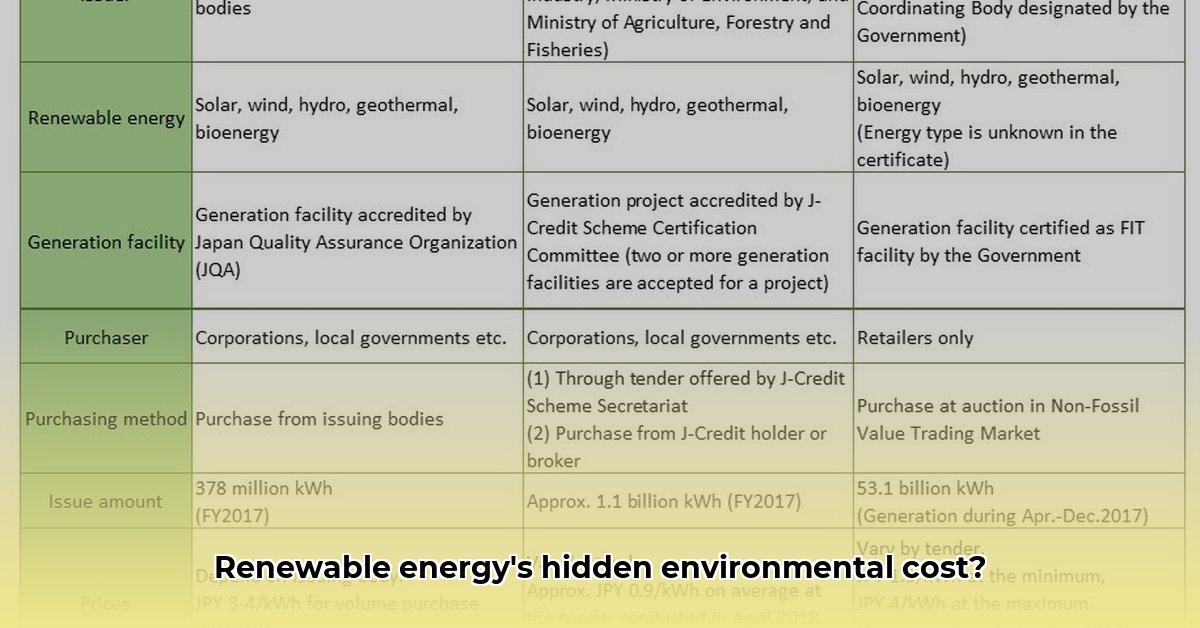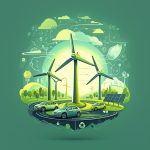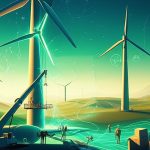Renewable energy sources like solar, wind, and hydro are crucial for a sustainable future. However, manufacturing these technologies has environmental impacts. This article explores these impacts, mitigation strategies, and the role of life-cycle assessment.
The Manufacturing Footprint: Unveiling the Impacts
Manufacturing renewable energy technologies requires resources, energy, and generates waste. While the long-term benefits of renewable energy are undeniable, we must acknowledge and address the upfront environmental costs. This involves understanding the entire process, from raw material extraction to final disposal.
Resource Extraction Challenges
Producing renewable energy technologies requires specific materials. For example, wind turbine magnets utilize rare earth elements, the mining of which can disrupt ecosystems. Solar panels require silicon, and its production is energy-intensive, potentially generating greenhouse gases. Addressing these resource extraction challenges is key to minimizing the overall environmental footprint.
End-of-Life Management
The disposal of renewable energy technologies presents a growing waste management challenge. Solar panels and wind turbine blades eventually require replacement, leading to potential waste if not properly managed. Recycling and repurposing initiatives are crucial to prevent merely trading one environmental problem for another.
Specific Impacts: A Closer Look at Each Technology
Wind Energy
Wind turbine manufacturing involves rare earth mineral extraction, which can disrupt ecosystems. The production of fiberglass and steel for blades and towers also adds to the environmental impact. Transportation and installation further contribute to the overall footprint. Blade recycling is developing but remains a work in progress.
Solar Energy
Solar panel production requires silicon, and sometimes cadmium and tellurium. Sourcing and processing these materials can be environmentally challenging. Manufacturing uses water and energy. End-of-life panel disposal presents another environmental hurdle, with recycling programs still evolving.
Geothermal Energy
Hydrothermal geothermal systems have a relatively small manufacturing footprint but can impact land use, water resources, and release hydrogen sulfide. Enhanced geothermal systems (EGS) raise concerns about potential induced seismicity, although research suggests the probability and magnitude are generally low.
Hydropower
Hydropower dam construction requires large amounts of concrete and steel, both energy-intensive to produce. Reservoirs alter ecosystems, displace communities, and can increase methane emissions.
Biomass Energy
Biomass energy relies on agriculture and forestry, which can impact the environment. Transporting, processing, and burning biomass can release pollutants. Sustainable sourcing and efficient technologies are crucial for minimizing the environmental footprint.
Mitigating Manufacturing Impacts: Striving for Sustainability
Minimizing the environmental footprint of renewable energy manufacturing requires a multi-pronged approach.
1. Closed-Loop Manufacturing
Designing components for disassembly and reuse maximizes material recovery and reduces the need for new raw materials. This approach minimizes the impact of mining and processing.
2. Sustainable Material Sourcing
Utilizing recycled materials and exploring alternatives to resource-intensive components like rare earth minerals is essential. Research into bio-based polymers and other sustainable materials shows promise.
3. Process Optimization
Improving manufacturing efficiency reduces energy use and waste generation. Implementing lean manufacturing principles can significantly lower resource consumption and emissions.
Life-Cycle Assessment: A Comprehensive Evaluation
Life Cycle Assessment (LCA) provides a cradle-to-grave analysis of a product’s environmental impacts, from raw material extraction to disposal. LCA considers various impact categories, including:
- Climate Change: Greenhouse gas emissions.
- Resource Depletion: Use of finite resources.
- Water Use: Water consumption and pollution.
- Land Use: Land use change and ecosystem impacts.
- Ecotoxicity: Impacts on ecosystems.
- Human Toxicity: Risks to human health.
LCA enables comparison of different renewable energy technologies, facilitating informed decision-making. It also highlights areas for improvement in manufacturing processes and promotes sustainable practices.
The Path Forward: Continuous Improvement
The journey towards sustainable energy requires continuous improvement. Research, innovation, and transparency are essential for minimizing the environmental footprint of renewable energy technologies. While challenges remain, ongoing efforts are paving the way for a cleaner and more sustainable future.
- What Types Of Jobs Does Wind Energy Create? - November 23, 2025
- Residential Wind Energy: Powering Homes with Small Turbines - November 21, 2025
- How Did Charles F. Brush Discover Wind Energy Tech? - November 19, 2025
















